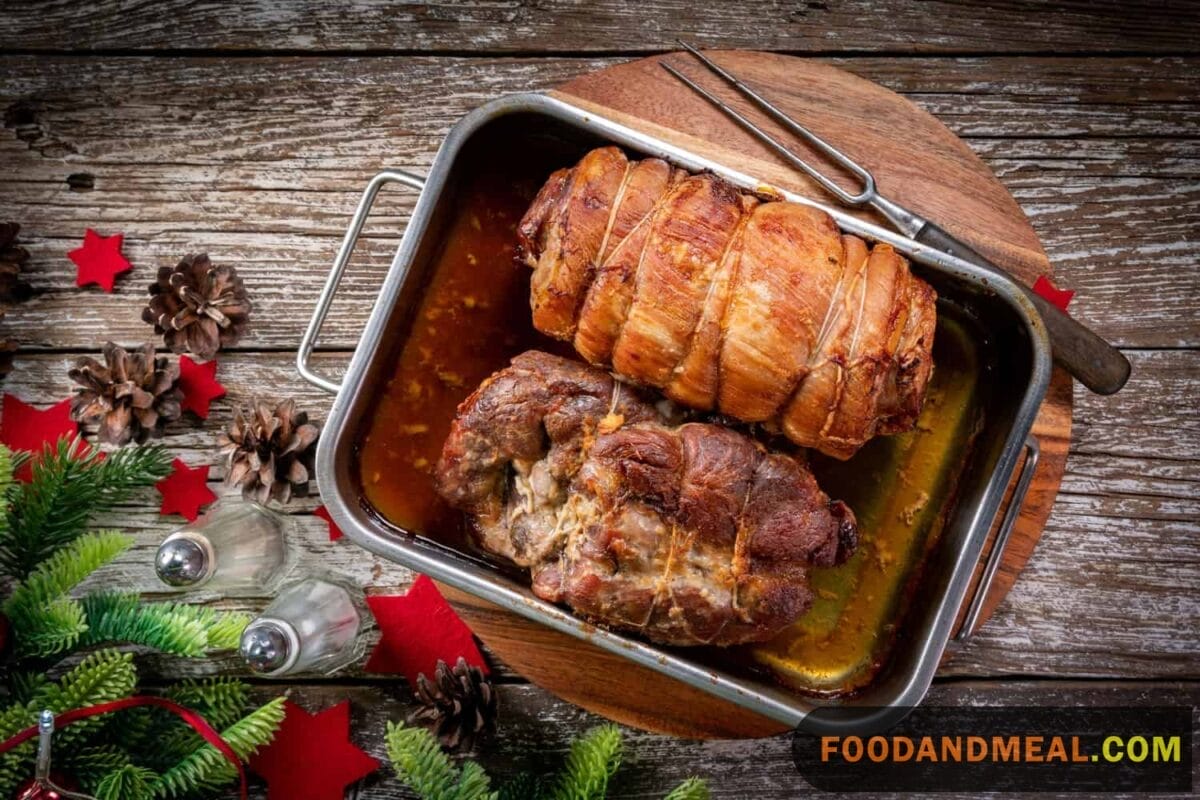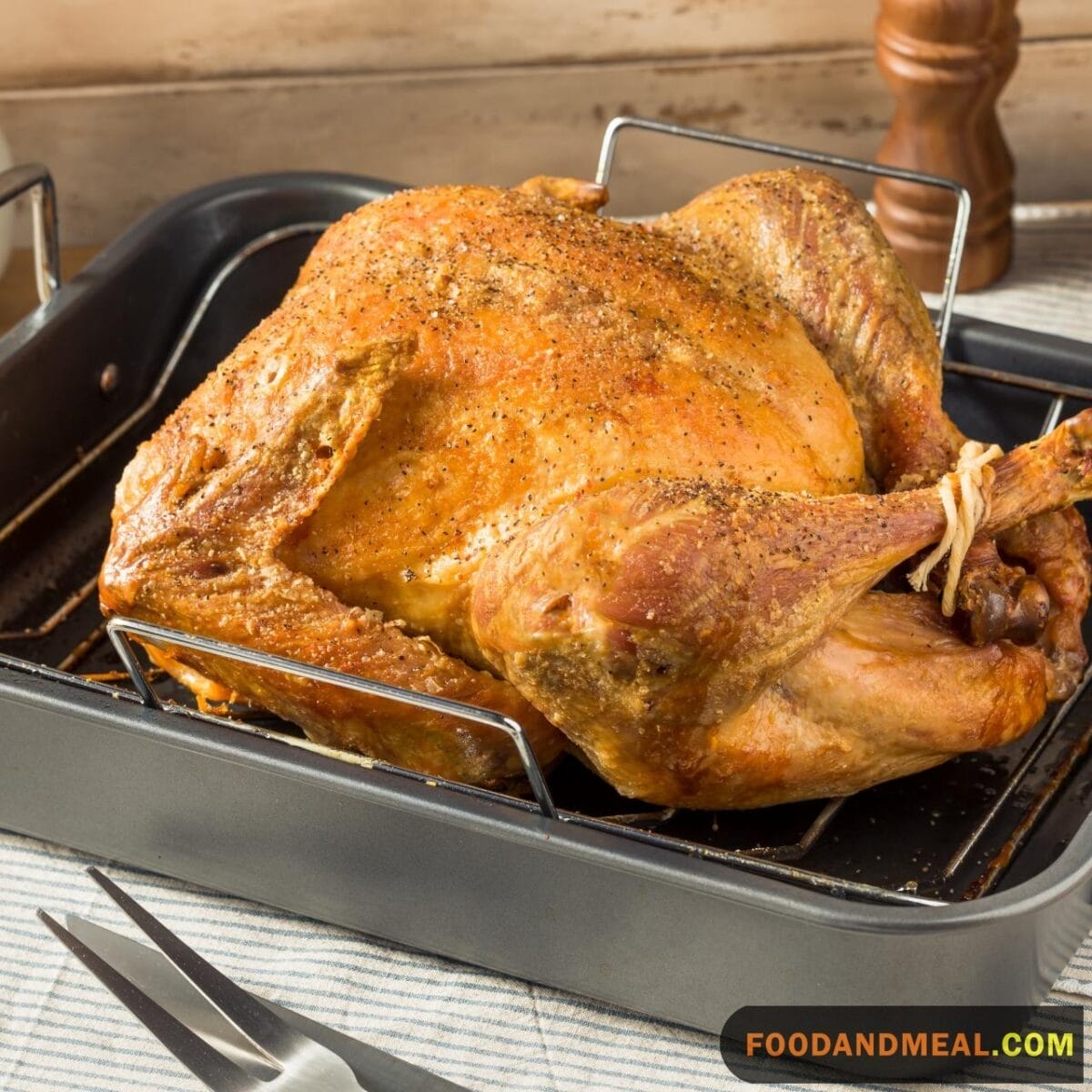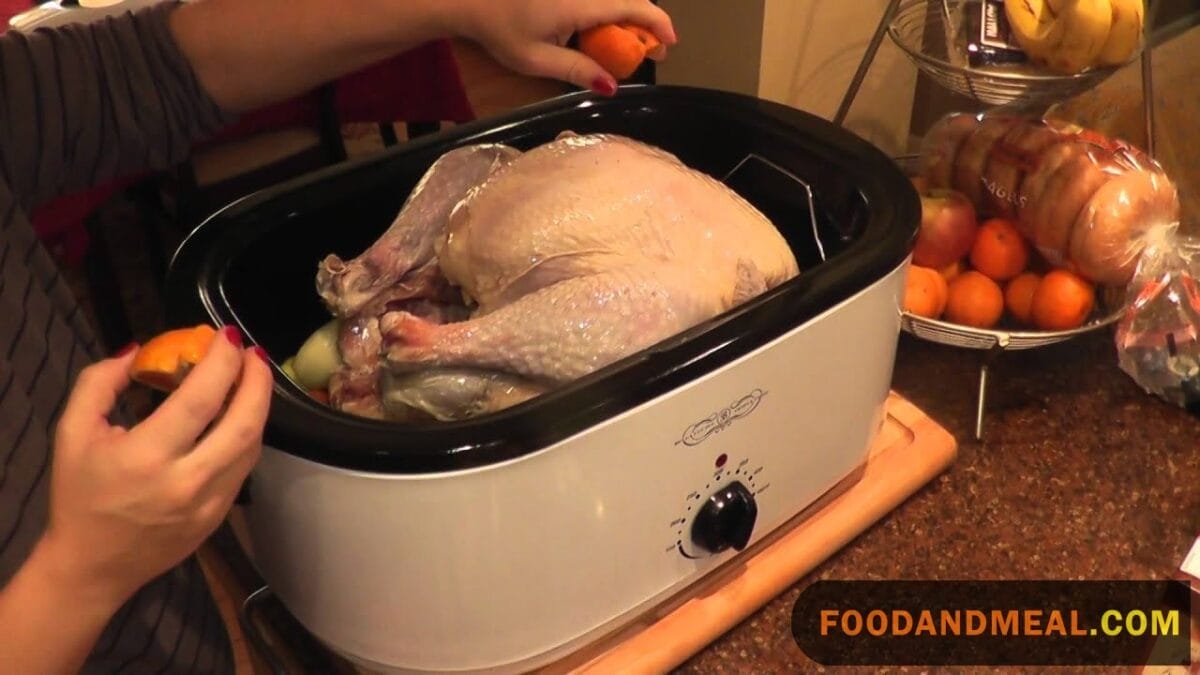A roaster oven, renowned for its versatility in baking, roasting, and slow cooking, often leads to a common question: should you add water? The answer depends on the specific cooking task at hand.
For roasting meat, especially large cuts like turkey or roasts, adding water can help maintain a moist cooking environment and prevent dryness. In baking, the decision depends on the recipe; some benefit from added moisture for texture, while others do not require it.
When slow cooking, using liquids like broth or sauce enhances flavor and tenderness. However, not all recipes necessitate water. Some foods release moisture on their own, and for some, a lack of water contributes to the desired results.
Essentially, whether to add water to the roaster oven depends on your specific cooking goal. Understanding its role will help you make informed choices, ensuring optimal use of the roaster oven.
Should You Add Water to a Roaster Oven?
The decision to introduce water into a roaster oven is not a steadfast requirement; rather, its necessity depends on the cooking method employed and the specific recipe in use. This dynamic aspect highlights the flexibility of the roaster oven in accommodating various cooking techniques.
In certain specific cases, the incorporation of water into the cooking process plays a crucial role in ensuring that the food retains moisture, preventing undesired dryness. This is particularly relevant when dealing with dishes prone to dryness or those requiring a humid cooking environment.
Conversely, there are instances where the cooking process can proceed without the addition of water. Some cooking methods and recipes may not require this supplemental element, offering a different approach to achieving optimal results.
To navigate this nuanced aspect of using a roaster oven, it’s advisable to refer to the specific recipe you’re working with or consult the manufacturer’s guidelines. These sources provide valuable insights into whether incorporating water is recommended for the particular dish you’re preparing. This informed guidance ensures that you make decisions based on the unique requirements of your culinary endeavor, contributing to a more precise and successful cooking experience with your roaster oven.

The Necessity of Adding Water: What’s its Purpose?
Introducing water into the roaster oven plays a pivotal role, serving dual functions that significantly enhance the cooking process.
Fundamentally, adding water to the roaster oven initiates the creation of steam. When water reaches the boiling point at the bottom of the oven, it transforms into steam. This becomes particularly crucial when dealing with certain types of meat, prone to dryness. The infusion of steam during cooking proves to be a culinary asset, ensuring that the meat remains moist, flavorful, and avoids undesirable dryness associated with conventional ovens.
Moreover, the second purpose of introducing water is its role as a heat regulator. The water present at the bottom of the roaster oven acts as a thermal regulator, adept at absorbing and releasing heat. This temperature-regulating process is invaluable in maintaining a stable cooking temperature. By preventing sudden fluctuations in temperature, water ensures even cooking, minimizing the risk of uneven or overly charred surfaces.
In essence, the decision to add water to the roaster oven depends on the cooking method employed and the specific recipe at hand. Understanding the dynamic role it plays helps harness the full potential of the roaster oven in accommodating various cooking techniques.
The significance of this temperature regulation becomes evident when striving for culinary perfection. Achieving the desired level of doneness is a delicate balance, and the consistency facilitated by the water in the roaster oven is a key factor. This not only ensures that your culinary creations are cooked to perfection but also guards against the unwanted outcome of burnt or unevenly cooked dishes.
Beyond its impact on steam creation and temperature regulation, the presence of water in the roaster oven contributes to establishing a harmonious and consistent cooking environment. This, in turn, has a positive cascading effect on the overall quality of the finished product. The infusion of moisture, the meticulous control of temperature, and the creation of an optimal cooking environment collectively underscore the importance of adding water to a roaster oven. It transforms the culinary journey, ensuring that each dish emerges from the oven with the perfect blend of tenderness, flavor, and uniformity.

How Much Water Should You Add To A Roaster Oven?
Achieving the perfect balance of steam generation without direct contact with the food is a key consideration when adding water to a roaster oven. The goal is to introduce enough water to the bottom of the oven to create a steam-rich environment [1], ensuring that the cooking process is conducive to retaining moisture, especially when dealing with meats.
When embarking on the journey of turkey roasting, a widely accepted guideline recommends adding approximately 1 cup of water to the bottom of the roaster oven. This measured approach helps strike the right equilibrium, allowing for the infusion of steam without overwhelming the cooking space.
However, it’s essential to recognize that the one-size-fits-all approach doesn’t necessarily apply when preparing various meats or dishes. Adjustments to the water quantity may be necessary, taking into account factors such as the size of the meat, the desired level of doneness, and the specific instructions outlined in the recipe.
A prudent practice during the cooking process is regular monitoring of the water level. This proactive approach ensures that the steam level remains consistent and at the desired intensity. Adding more water as needed becomes a dynamic part of the culinary orchestration, guaranteeing that the cooking environment is optimized for each dish.
Equally important in this culinary symphony is heeding the manufacturer’s instructions that accompany your specific roaster oven. Manufacturers often provide valuable insights into the nuances of their appliances, including specific recommendations on the ideal amount of water to use. Following these guidelines not only ensures the longevity and optimal performance of the roaster oven but also contributes to the precision of your cooking endeavors.
In essence, the art of adding water to a roaster oven involves a delicate dance of factors, from the type of dish being prepared to the specificities of the appliance itself. With a mindful approach to these considerations, you not only harness the benefits of steam for enhanced flavor and succulence but also elevate your cooking experience to new heights of precision and culinary excellence.
Can You Put Water In The Bottom Of A Roaster Oven?
The option to introduce water into the bottom of a roaster oven presents itself as a viable strategy. As elucidated earlier, this culinary technique serves a dual purpose, primarily involving the generation of steam and the utilization of water as a heat sink within the oven cavity.
The strategic placement of water in the bottom of the roaster oven plays a pivotal role in the nuanced regulation of temperature. Acting as a dynamic medium, water functions by absorbing heat and subsequently releasing it, contributing to a more controlled and stable cooking environment. This meticulous temperature regulation becomes particularly significant in the pursuit of ensuring that the culinary creations within the roaster oven undergo even and consistent cooking.
However, it’s imperative to exercise caution, as the advisability of incorporating water can vary based on the specific model of roaster oven being used. Not all roaster ovens are designed with water utilization in mind, and some models may not be equipped to handle it effectively. Therefore, it is recommended to refer to the manufacturer’s guidelines or product specifications to ascertain whether your particular roaster oven is indeed suited for the introduction of water. This precautionary measure ensures a harmonious alignment between your cooking practices and the specifications of your roaster oven model, fostering an optimal and safe culinary experience.

Can You Cook Without Water In A Roaster Oven?
Opting to cook without water in a roaster oven is indeed possible. However, it’s essential to be aware that this approach may lead to drier and potentially less flavorful food.
The absence of water in the cooking process requires careful attention to prevent the food from drying out. Regular monitoring and basting with juices, marinades, or sauces become crucial techniques to maintain the desired level of moisture and enhance the overall flavor profile.
Moreover, cooking without water in a roaster oven may result in more pronounced temperature fluctuations, posing a challenge in achieving even cooking. Without the heat sink effect provided by water, there’s a risk of the temperature rising too quickly or reaching higher levels, potentially impacting the quality of the final dish.
It is important to emphasize that some recipes specifically outline the precise use of water in the cooking process, and deviating from these instructions may impact the outcome of the dish. It is advisable to adhere to cooking formula guidelines and incorporate the appropriate amount of water to ensure the desired flavor and texture. In essence, cooking without water is possible, but careful consideration and adjustments are necessary to maintain the desired culinary quality.
Is it possible to use an oven as a substitute for a slow cooker?
Certainly, you can use an oven as a substitute for a slow cooker. The functionality of an oven can perform tasks similar to a slow cooker, as both are highly effective in cooking food at low temperatures over an extended period.
Cooking at low temperatures in an oven creates conditions for the development and harmonious blending of flavors, ultimately yielding tender and flavorful results. The prolonged cooking time allows for deeper flavor absorption, enhancing the overall taste and texture of the dish.
A notable feature of an oven is the generation of heat from both the bottom and the lid. This dual heating mechanism promotes efficient heat circulation around the food, benefiting dishes that are preferred to be baked golden or have a crispy texture. Even heat distribution plays a crucial role in achieving the desired texture, making the oven a versatile tool for various cooking techniques.
Some specific ovens are equipped with slow-cooking settings, allowing you to adjust the temperature low over an extended period, similar to the function found in traditional slow cookers.
Adding water to the oven serves two purposes: creating steam and acting as a heat sink. Water at the bottom of the oven plays a vital role in temperature control, absorbing and releasing heat to prevent excessive fluctuations. This process helps ensure even cooking, contributing to the overall success of your cooking endeavors.
FAQs (Frequently Asked Questions) – Do You Put Water in a Roaster Oven?
Q: Is it necessary to add water to a roaster oven when cooking?
A: The necessity of adding water depends on the recipe and the type of food being cooked. Water is often used to add moisture, especially when roasting meats, to prevent them from drying out.
Q: When should water be added to a roaster oven?
A: Water is commonly added to a roaster oven when cooking meats like roasts or poultry. It helps maintain moisture, ensuring the meat remains tender during the cooking process.
Q: How much water should be added to a roaster oven?
A: The amount of water needed varies based on the recipe and the specific cooking requirements. Generally, enough water is added to cover the bottom of the roaster oven to create a moist cooking environment.
Q: Can liquids other than water be used in a roaster oven?
A: Yes, other liquids such as broth, wine, or a combination of liquids can be used in place of water to add flavor to the dish being cooked.
Q: Are there foods that don’t require water in a roaster oven?
A: Certain foods, like casseroles or baked goods with sufficient moisture content, may not require additional water in the roaster oven. Always follow the specific recipe instructions.
Q: Is water necessary when roasting or baking vegetables in a roaster oven?
A: Water is generally not necessary when roasting vegetables in a roaster oven. Vegetables often have enough natural moisture, and water may not be needed unless cooking them alongside meats.
Q: Does adding water affect the cooking times in a roaster oven?
A: Adding water to a roaster oven can influence cooking times, especially for meats. It helps create a more even cooking environment and contributes to tenderness.
Q: Can water be used in a roaster oven for slow cooking or braising?
A: Yes, water can be added to a roaster oven for slow cooking or braising to create a moist cooking environment, especially when working with tougher cuts of meat.
Q: Are there instances where water should not be used in a roaster oven?
A: Some recipes, particularly those for specific baked goods, may not require the addition of water. Always follow the recipe instructions provided.
Q: Can you use a roaster oven without adding water?
A: Yes, some recipes may not call for the addition of water, especially if the dish being prepared does not require extra moisture to remain tender.
Q: Should water be added to the roaster oven before preheating?
A: It’s generally not necessary to add water before preheating the roaster oven. Water is typically added just before cooking, following the recipe guidelines.
Q: Can the liquid in the roaster oven be used for making gravy or sauces?
A: Yes, the liquid in the roaster oven, whether water or other liquids, can be used to make flavorful gravies or sauces. Collect the drippings and incorporate them into your recipe.
Always refer to the specific recipe instructions when using a roaster oven, as the decision to add water depends on the cooking method, the type of food being prepared, and the desired outcome.
I'm Kelly Atkinson, with a passion for dissecting the world of home goods. My reviews stem from thorough testing and a love for sharing detailed insights. Each piece I write offers a glimpse into my explorative journey, aiming to guide readers to informed choices with authenticity and precision, making every review a blend of exploration and expertise.
